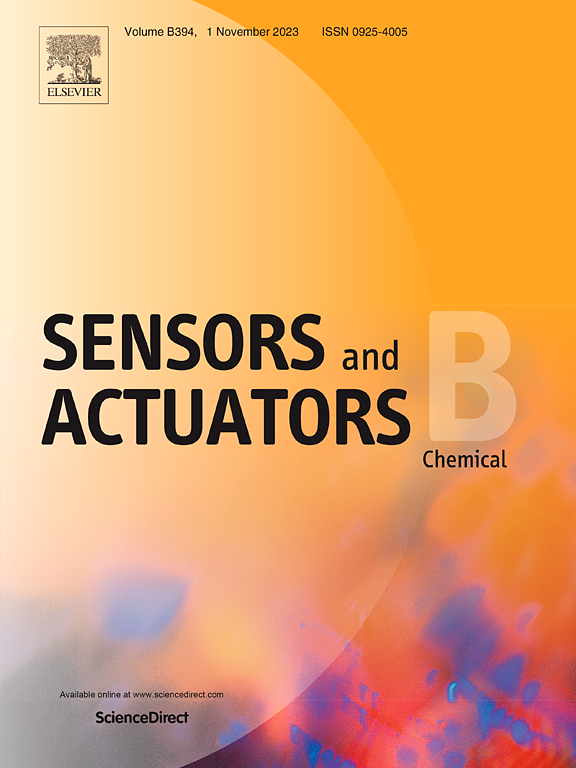基于荧光纳米探针的视觉工具硒纳米颗粒在镉诱导肝纤维化中的应用
IF 3.7
1区 化学
Q1 CHEMISTRY, ANALYTICAL
引用次数: 0
摘要
镉(Cd)是一种非必需的重金属,通过食物链进入人体,在各种器官中积累,特别是在肝脏中,它可以导致肝纤维化。硒(Se)是人体必需的微量元素,可以通过影响重金属的抗氧化和螯合特性来抑制重金属毒性。硒在人体中主要以硒半胱氨酸(Sec)的形式存在。此外,目前肝纤维化的诊断还存在一些不足。因此,迫切需要开发一种可视化工具来研究和评估硒和镉在小鼠肝纤维模型中的拮抗作用。在这项工作中,我们利用硒代半胱氨酸纳米探针GC-Sec作为视觉工具,利用硒对肝纤维化的治疗作用来评估硒对小鼠Cd的拮抗作用。与Cd处理组相比,Se + Cd组小鼠图像中GC-Sec产生的荧光明显减弱,表明Sec在肝脏中被耗尽,表达水平降低。血清谷草转氨酶(AST)和丙氨酸转氨酶(ALT)浓度降低,肝脏质地变软,弥漫性肝窦淤积减轻,表明游离Cd在肝脏中被消耗。令人印象深刻的是,Sec和Cd的同时消耗表明我们在Cd诱导的肝纤维化小鼠模型中成功地观察到Se对Cd的拮抗作用,这表明新构建的可视化工具可以为未来快速评估Se-Cd相互作用离子和成像提供强大的分子工具。本文章由计算机程序翻译,如有差异,请以英文原文为准。
Applications of a fluorescent nanoprobe-based visual tool using selenium nanoparticles on cadmium-induced liver fibrosis
Cadmium (Cd) is a non-essential heavy metal that enters the body through the food chain, accumulating in various organs, especially in the liver, where it can cause liver fibrosis. Selenium (Se), an essential trace element, can inhibit heavy metal toxicity by affecting antioxidant and chelating properties. Also, Se mainly exists as selenocysteine (Sec) in humans. In addition, there are some shortcomings in the current diagnosis of liver fibrosis. Therefore, there is an urgent need to develop a visualization tool to study and assess the antagonistic effects of selenium and cadmium in a mouse liver fiber model. In this work, the antagonistic effect of Se on Cd in mice was evaluated using the therapeutic effect of Se on liver fibrosis using selenocysteine nanoprobe GC-Sec as a visual tool. Compared with the Cd-treated group, the fluorescence produced by GC-Sec was significantly attenuated in the mice images of the Se + Cd group, indicating that Sec was depleted and its expression level was reduced in the liver. Additionally, serum concentrations of aspartate aminotransferase (AST) and alanine aminotransferase (ALT) were reduced, the liver texture became softer, and diffuse intrahepatic sinusoidal stasis was reduced, indicating that free Cd was depleted in the liver. Impressively, the simultaneous depletion of Sec and Cd suggested that we successfully observed the antagonism of Se on Cd with the aid of GC-Sec in Cd-induced liver fibrosis mice models, suggesting the newly constructed visualization tool can provide a powerful molecular tool for rapid evaluation of Se-Cd interact ion and imaging in future.
求助全文
通过发布文献求助,成功后即可免费获取论文全文。
去求助
来源期刊

Sensors and Actuators B: Chemical
工程技术-电化学
CiteScore
14.60
自引率
11.90%
发文量
1776
审稿时长
3.2 months
期刊介绍:
Sensors & Actuators, B: Chemical is an international journal focused on the research and development of chemical transducers. It covers chemical sensors and biosensors, chemical actuators, and analytical microsystems. The journal is interdisciplinary, aiming to publish original works showcasing substantial advancements beyond the current state of the art in these fields, with practical applicability to solving meaningful analytical problems. Review articles are accepted by invitation from an Editor of the journal.
 求助内容:
求助内容: 应助结果提醒方式:
应助结果提醒方式:


